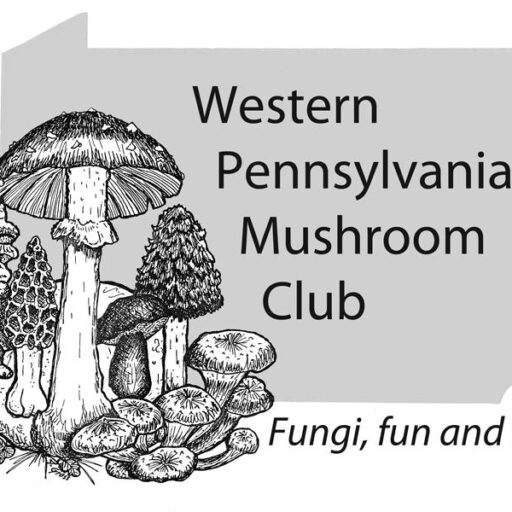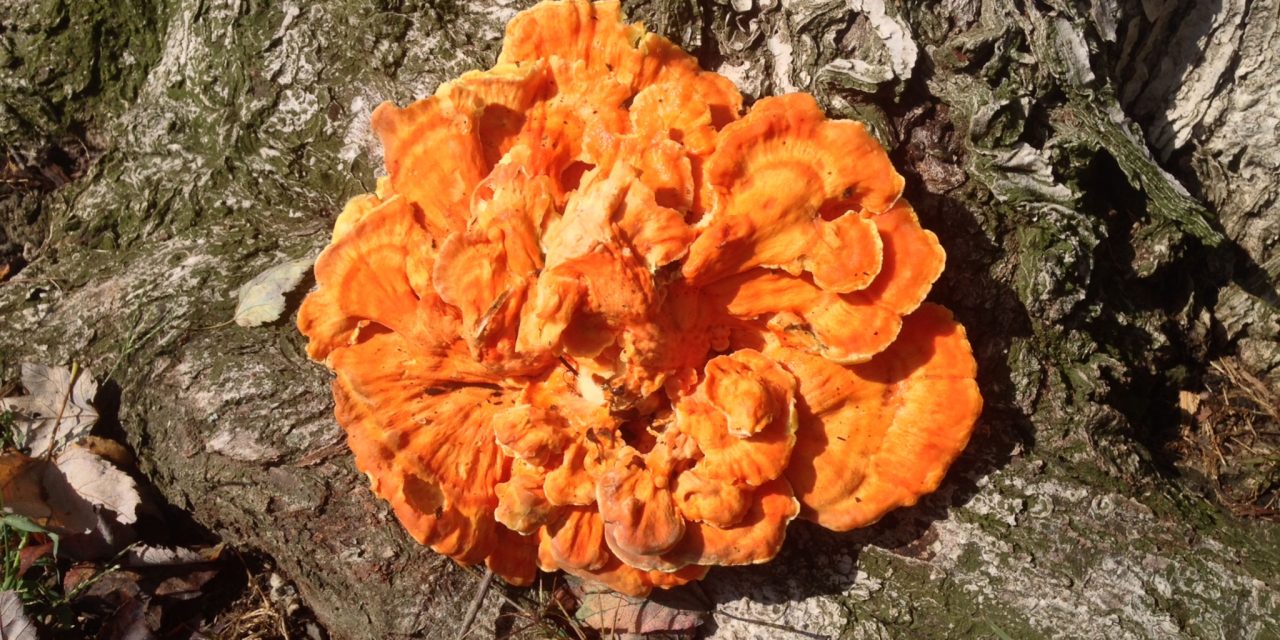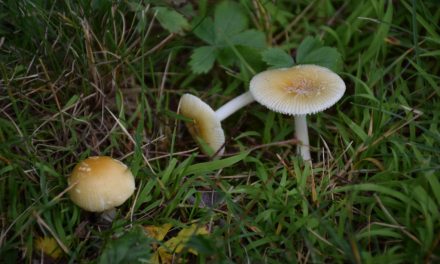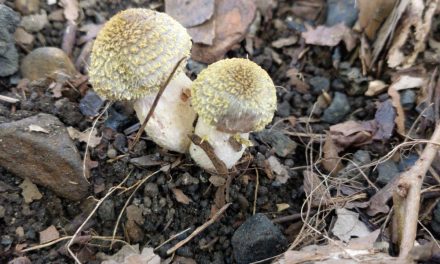A group of about 30 people joined Pia van de Venne from Friends of Murrysville Parks and Richard Jacob from WPMC. Fortunately the rain held off and we could take a pleasant walk through the park. There has been a lot of rain recently but it did not have time to trigger the fruiting of the larger fungi species. The species list contains a lot of smaller specimens along with crusts, parchments and polypores. Some of the smallest species were the most interesting finds. Hymenoscyphus fructigenus, a small ascomycetes, was one such example that only lives on the nutshells of hickory, walnut and acorns. We had a couple of unidentified species including a another small ascomycetes. Given the mostly dry weather through September we found plenty of species with very little overlap to last years walk in June.
Species identified by Richard Jacob, Adam Haritan and John Plischke III. Species list entered by Richard Jacob.
List of species found on the walk at Townsend Park:
[icon style=”camera”] Armillaria tabescens (Ringless Honey Mushroom),
[icon style=”camera”] Artomyces pyxidatus (Crown-tipped Coral Fungus),
[icon style=”camera”] Bisporella citrina (Yellow Fairy Cups),
[icon style=”camera”] Bjerkandera adusta (Smoky Polypore),
[icon style=”camera”] Daedaleopsis confragosa (Thin-maze Flat Polypore),
[icon style=”camera”] Entoloma abortivum (Aborted Entoloma),
[icon style=”camera”] Exidia recisa (Wood ear),
[icon style=”camera”] Fomitopsis spraguei (Green Cheese Polypore),
[icon style=”camera”] Ganoderma applanatum (Artist’s Conk),
[icon style=”camera”] Gymnopus dryophilus (Oak-loving Collybia),
[icon style=”camera”] Hymenoscyphus fructigenus (),
[icon style=”camera”] Kretzschmaria deusta (Carbon Cushion, Brittle Cinder),
[icon style=”camera”] Laetiporus sulphureus (Chicken Mushroom; Sulphur Shelf),
[icon style=”camera”] Lycoperdon perlatum (Gem-studded Puffball),
[icon style=”camera”] Marasmius rotula (Pinwheel Marasmius),
[icon style=”camera”] Marasmius strictipes (Orange-yellow Marasmius),
[icon style=”camera”] Mycena galericulata (Common Mycena; Rosy-gill Fairy-helmet),
[icon style=”camera”] Mycena haematopus (Bleeding Mycena),
[icon style=”camera”] Naematoloma fasciculare (Sulfur Tuft),
[icon style=”camera”] Neofavolus alveolaris (Hexagonal-pored Polypore),
[icon style=”camera”] Panellus stipticus (Luminescent Panellus, bitter oyster),
[icon style=”camera”] Phallus ravenelii (),
[icon style=”camera”] Pholiota limonella (),
[icon style=”camera”] Pleurotus ostreatus (Oyster Mushroom),
[icon style=”camera”] Plicaturopsis crispa (),
[icon style=”camera”] Polyporus badius (Black-footed Polypore),
[icon style=”camera”] Psathyrella delineata (),
[icon style=”camera”] Resupinatus applicatus (Black Jelly Oyster),
[icon style=”camera”] Stereum complicatum (Crowded Parchment),
[icon style=”camera”] Stereum hirsutum (Hairy Parchment),
[icon style=”camera”] Stereum ostrea (False Turkey-tail),
[icon style=”camera”] Trametes elegans (),
[icon style=”camera”] Trametes versicolor (Turkey-tail),
[icon style=”camera”] Trichaptum biforme (Violet Toothed-Polypore),
[icon style=”camera”] Tyromyces chioneus (White Cheese Polypore),
[icon style=”camera”] Xerula furfuracea (Rooted Collybia),
[icon style=”camera”] Xylaria polymorpha (Dead Man’s Fingers),
[icon style=”camera”] Xylobolus frustulatus (Ceramic Parchment)
Species not currently on clubs life list:
Mycena with straw yellow stem
Pictures by Jo Cowling, Adam Haritan and Richard Jacob
























Our instructor did an excellent job finding so many varieties of mushrooms. I really learned a great deal. I enjoyed the hike in the woods and meeting other people with like interests.